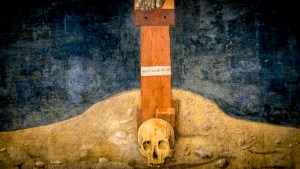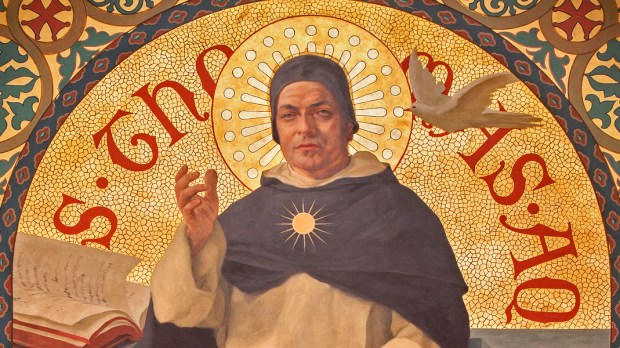There’s an old joke where one man is telling another, “Here I hold in my hands George Washington’s ax. This was really his! Well, except the handle broke a few years ago, and I had to replace it … and the head rusted, and I had to replace that … but this is George Washington’s ax!”
This is actually based on an old philosophical problem called “the ship of Theseus.” It asks, “if the ship of the hero Theseus sat in the harbor and slowly rotted, and each rotten plank was replaced by a fresh one, at what point would it cease to be the ship of Theseus?”
Both this joke and this question touch upon a deep issue: What makes a thing what it is? And this question relates to one of the most central tenets of Christianity: the resurrection of the dead.
At death, the soul separates from the body, and the body begins to decompose. It does not take long before what was once a human body becomes a pile of dust. The most common objections to the doctrine of the bodily resurrection center on the question of how a person could be said to be raised from the dead if their body has ceased to be. Even if God creates a new body for the person, can we really say it’s the same person any more than we would say that the new handle and new head make up George Washington’s ax?
These objections were addressed by St. Thomas Aquinas in his Summa Contra Gentiles. In this work aimed at using reason to convince non-Christians of the truth of the Christian faith, St. Thomas first states this common objection in several forms, and then answers them, appealing to logic and common sense. His answers point to a key truth about the human person.
The objections St. Thomas responds to in Summa Contra Gentiles Book IV, Ch. 80 are put in philosophical terms, but also include two concrete examples that illustrate the point well. First, he asks: to be “the same person” rising from the dead, wouldn’t the body need to include every element that had ever been part of that body — including nails that had been clipped, every hair that had been cut, every bead of sweat that had been lost? Wouldn’t the result be a monster?
Secondly, he brings up the question of cannibalism: if a cannibal consumes the flesh of a person, so that that flesh becomes part of the cannibal, whose flesh will it be at the resurrection? (A curious twist on the Saduccees’ question to Jesus.)
In Ch. 81, St. Thomas addresses all of these arguments individually, but first states his key point: the essential part of the human person is the soul. The soul is what makes a person a human being (its “form”), and is what makes the collection of elements that make up the body a unified thing. This is how, despite the constant change in the elements and atoms that make up a person’s body, we can say that it is truly the same person from one moment to the next.
Together, the soul and the body form the human person — not as two distinct things glued together, but as two aspects of a unified whole. We are ensouled bodies, and embodied souls. St. Thomas argues elsewhere that this fact in itself implies a resurrection of the dead: if the soul is naturally immortal, and the soul and the body naturally go together, it only makes sense that the body should be destined to share in the immortality of the soul — hence, resurrection.

Read more:
What will happen to the planet at the end of the world?
If we were merely physical creatures, we would ourselves eventually run into the problem of Washington’s ax and Theseus’ ship: when our atoms are replaced, at what point are we no longer the same person? But because we have a soul, a non-physical part to us that endures the changes, that problem is resolved.
And because we have a spiritual soul, an immortal soul, that survives the death of the body, then at the resurrection, when a new body is formed long after ours has turned to dust (and a glorified body at that), we can truly say it is our body, because it is our own soul that constitutes it.
Thus, St. Thomas shows, we do not need to have every hair follicle and nail returned to us, because, as he says, “That which is not an obstacle to man’s identity in this life is clearly no obstacle to his identity when he rises again.” Nor does cannibalism present any problems (apart from moral ones), for the same reasons.
It’s not the flesh that makes us what we are, but our immortal soul. Whatever atoms or elements, fluids or cells, make up our body at any given time, what makes it our body, what makes it us, is that our soul is joined to it as its form. We are not an ax or a ship, but embodied spirits made in the image and likeness of God.

Read more:
Why is there a skull beneath my crucifix?

